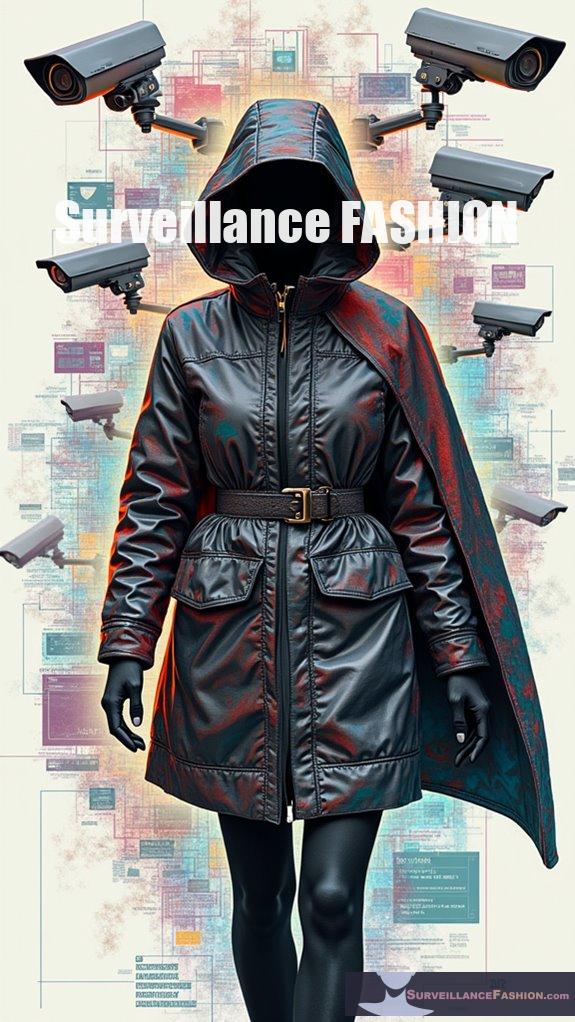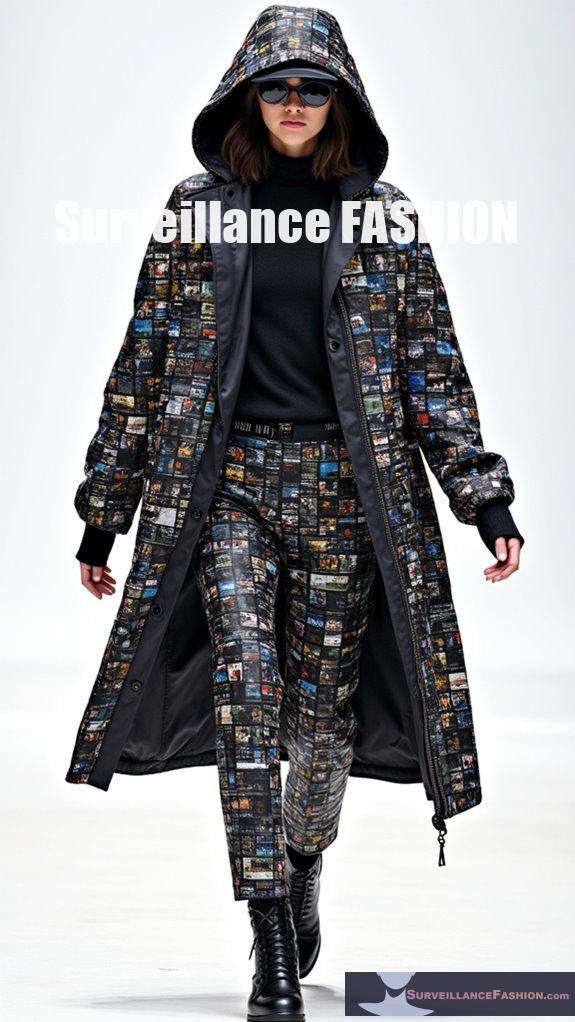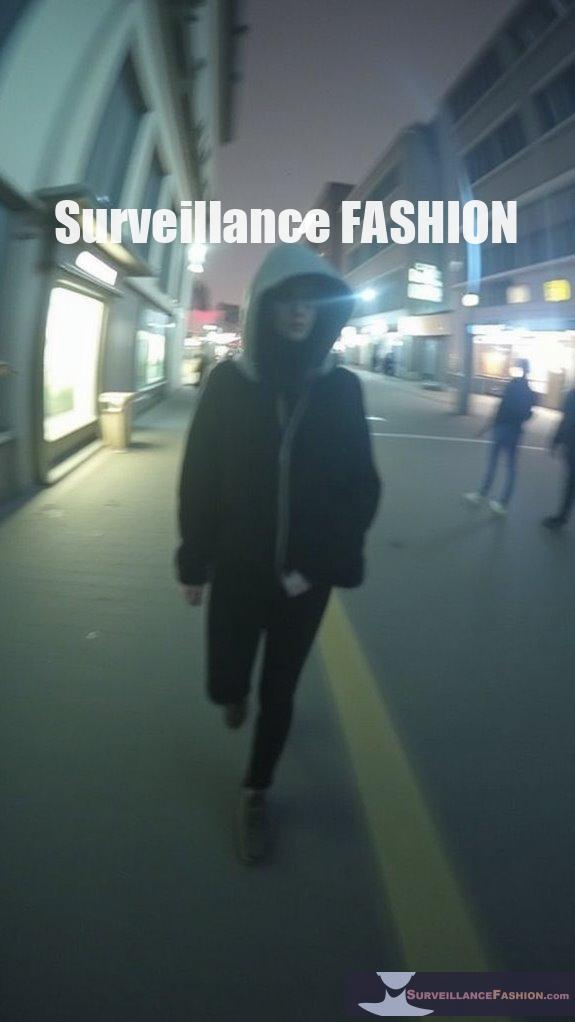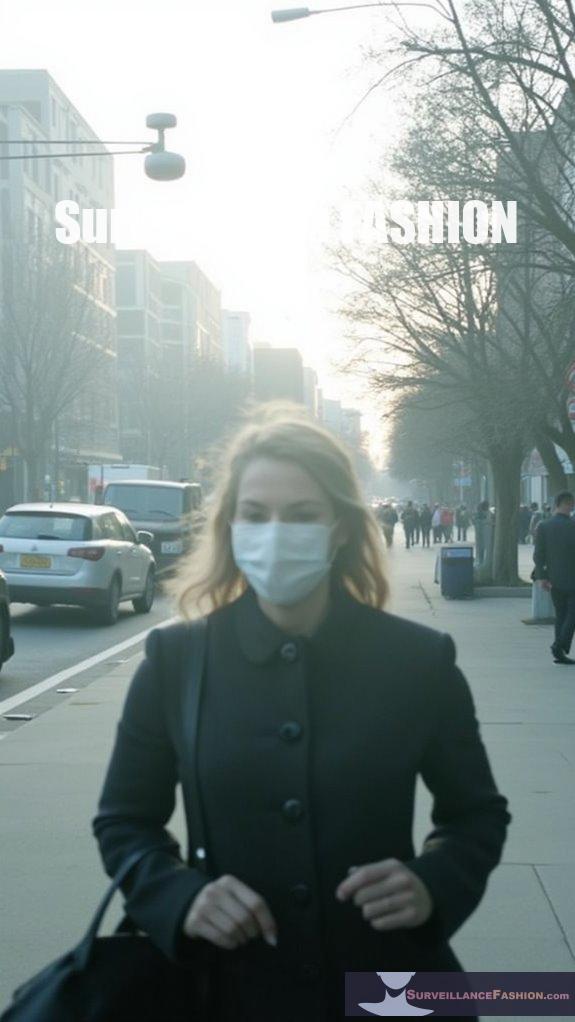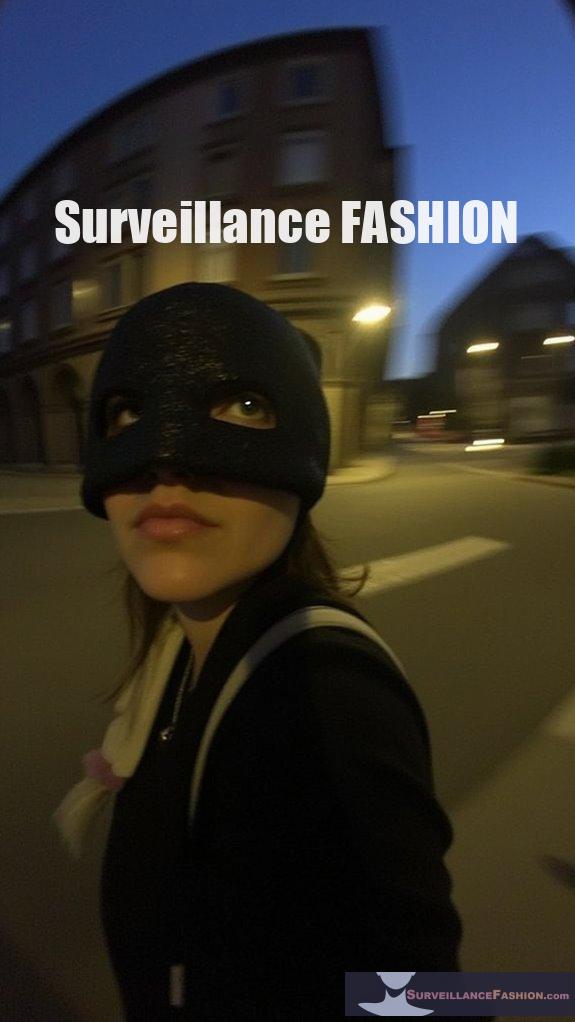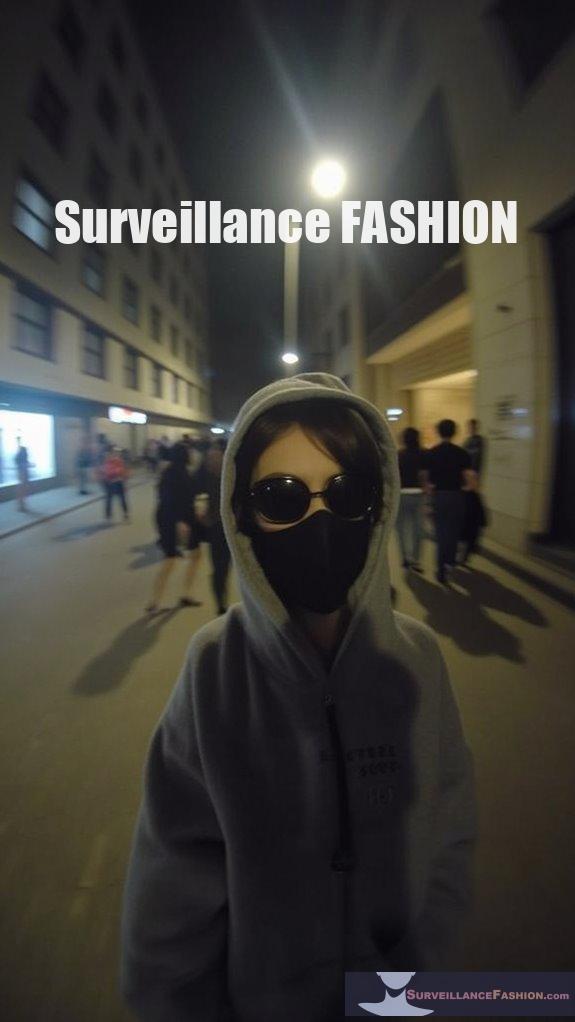Urban surveillance feels like a plot twist gone wrong.
Sure, I like the idea of safer streets, but at what cost?
I remember walking through downtown wearing my anti-surveillance jacket—yes, it exists! I felt like I was in a spy movie, evading the eyes of those pesky cameras.
It’s both comforting and a bit ridiculous. I thought, is wearing this odd camouflage really going to keep my privacy intact?
Yet, amidst the risks, there’s a thrill in reclaiming a chunk of my personal freedom.
I can’t help but wonder if we’re becoming the characters in someone else’s surveillance drama.
What’s next—anti-surveillance sunglasses?
Anti-Surveillance Fashion: My Journey to Becoming Incognito
On a particularly bewildering day, I decided to don my unique anti-surveillance outfit to a crowded festival. Armed with my reflective hooded cloak, I felt ten feet tall!
Little did I know there’d be a sea of camera-equipped drones buzzing above.
As I blended into the crowd, it was a liberating feeling. I felt like I had outsmarted the system, turning my fashion statement into a shield.
But part of me wondered: as I dodged detection, were others invisibly suffering from this tech? It left me questioning our relationship with privacy and technology.
Who knew clothing could stir such deep thoughts?
Quick Takeaways
- Balancing public safety and individual rights is essential, as surveillance technologies can reduce crime yet risk infringing on civil liberties.
- Community trust and engagement are critical for effective surveillance deployment, ensuring that strategies align with local values and needs.
- Racial and social biases in surveillance technology necessitate critical assessment to prevent disproportionate targeting of minority groups.
- Legal frameworks must adapt to the complexities of surveillance, addressing ethical concerns, corporate interests, and societal implications.
- Transparency in the use of surveillance technologies promotes accountability and empowers citizens to protect their privacy rights in urban settings.
The Intersection of Public Safety and Civil Liberties

In today’s urban environment, the tension between public safety and civil liberties often resembles a delicate dance, where each step forward in enhancing security technologies can inadvertently encroach upon fundamental rights.
As surveillance technologies like CCTV and AI-driven systems reduce crime rates—evident with over 50% decreases in specific settings—you’ll find that community trust emerges as a pivotal element in ensuring these tools remain effective. This is particularly exemplified by the fact that the CCTV system has contributed to a 51% decrease in parking lot crime in certain areas. However, the implementation of these technologies raises significant concerns regarding data protection principles, as their misuse can lead to pervasive overreach into individual privacy.
With increased scrutiny necessitating surveillance accountability, policymakers must tread carefully, balancing the impressive benefits of crime prevention against potential rights infringements.
Ultimately, fostering transparency and sound policies is essential in maintaining civil liberties while enhancing public safety measures.
Navigating Ethical Use Principles in Surveillance
Steering ethical use principles in surveillance presents a complex terrain, where the integration of technology into urban environments demands careful consideration of both societal benefits and individual rights. Moreover, surveillance practices must align with legal boundaries to ensure a balance between public safety and the protection of personal freedoms.
Addressing Racial and Social Biases in Surveillance Technology
The pervasive application of surveillance technology, particularly in urban settings, illuminates significant racial and social biases that demand urgent attention and intervention.
Racial profiling, intertwined with algorithmic bias in surveillance, leads to disproportionate targeting of minority communities, particularly in areas already burdened by systemic inequities.
For instance, the concentration of facial recognition cameras in the Bronx and Brooklyn correlates with higher rates of minority presence, compounding historical injustices. As flawed police databases empower biased predictive policing, ineffective and unproductive stops spiral, leading to mistrust and marginalization.
To challenge these entrenched disparities, one must critically assess the ethical frameworks and technological limits shaping these surveillance practices today. Additionally, recognizing how surveillance systems’ impact on communities can provide valuable insights into mitigating these biases and fostering a more equitable approach to urban safety.
The Role of Community Engagement in Surveillance Policies

Surveillance policies increasingly recognize community engagement as an indispensable element in shaping effective strategies that prioritize both safety and the rights of residents. By fostering community trust through participatory design, you’re not just implementing surveillance; you’re cultivating an environment where residents feel empowered and invested.
Collaborative networks, involving law enforcement and community members, enhance accountability and attentiveness, leading to elevated public safety.
Workshops that invite local input can yield richer data, integrating personal viewpoints with empirical evidence. Ultimately, engaging citizens in decision-making processes guarantees that surveillance policies align with community values, bolstering legitimacy and effectiveness in addressing real-world concerns.
Legal Frameworks and Privacy Safeguards in Urban Surveillance
While understanding the complex relationship between legal frameworks and privacy safeguards in urban surveillance, one must appreciate the ongoing evolution of regulations shaped by societal values and technological advancements.
Key elements include:
- Legal compliance must align with international human rights standards.
- Data rights empower individuals through frameworks like GDPR.
- Anonymization and de-identification mitigate privacy risks in data collection.
- Regulations often reflect unique balances between state security and individual privacy.
- Independent oversight bodies guarantee accountability in urban surveillance practices.
As urban environments increasingly harness surveillance technology, these considerations reshape our relationship with privacy and public safety.
Facial Recognition Technology Deployment
As urban environments evolve, law enforcement agencies increasingly integrate facial recognition technology (FRT) into their operations for various applications, from identifying suspects to enhancing public safety monitoring.
However, deployment concerns arise around privacy violations, particularly given that approximately 50% of Americans lived in jurisdictions utilizing FRT by 2016.
The New York Police Department exemplifies rapid adoption, using FRT in about 22,000 cases from 2016 to 2019. While offering potential benefits like crime deterrence, the technology’s drawbacks include racial bias and erroneous identifications, especially affecting communities of color.
In light of these issues, organizations like Surveillance Fashion endeavor to bridge the gap with informed discourse.
Trends in Monitored Clothing

The burgeoning field of monitored clothing has become increasingly relevant parallel to advancements in urban surveillance technologies, including facial recognition systems.
As a fashion-forward consumer, you’ll notice emerging trends that meld technology and style, allowing for greater functionality without sacrificing aesthetics:
- Smart textiles embed biometric sensors for tracking health.
- Conductive fibers enable flexible, washable electronics.
- Integration with smartphones facilitates real-time activity monitoring.
- Discreet designs enhance fashion integration.
- Sustainable materials encourage an eco-friendly approach.
This convergence reflects our commitment to addressing concerns about privacy and ethics while paving the way for innovative solutions within the surveillance environment.
Civil Liberties in Surveilled Environments
Surveillance technologies permeate urban environments, prompting pressing questions about civil liberties within these monitored spaces.
Your freedom is jeopardized as large-scale programs often collect extensive personal data, targeting marginalized communities while undermining surveillance accountability. The specter of data transparency remains elusive, enabling unjust policing practices.
For instance, activists face systematic surveillance that comprises sensitive information, creating an environment of fear and self-censorship. Without robust oversight, governments and agencies exploit vague data policies, diminishing public trust.
This is precisely why platforms like Surveillance Fashion promote awareness, advocating for ethical surveillance practices and empowering individuals to demand accountability in a world increasingly governed by pervasive monitoring.
Eyes Everywhere: Anti-Surveillance Ebook review
Steering through the complexities of urban surveillance, one might find that the anti-surveillance ebook, “Eyes Everywhere,” serves as a critical resource for understanding the implications of pervasive monitoring on modern life.
It expertly outlines essential anti-surveillance strategies, emphasizing the necessity of digital privacy in today’s society.
- Analyzes the intersection of technology and civil liberties
- Explores case studies demonstrating surveillance’s expansive reach
- Investigates the role of corporate interests in monitoring
- Offers actionable tools for individuals to reclaim privacy
- Highlights the ethical dilemmas surrounding surveillance technology
Navigating this environment requires informed vigilance, as knowledge fosters power.
Share Your Own Story
To summarize, the balance between urban surveillance and civil liberties demands complex consideration and proactive engagement. For instance, a hypothetical neighborhood equipped with facial recognition systems might combat crime effectively yet simultaneously infringe on the residents’ right to privacy, exemplifying the delicate interplay between security measures and individual freedoms. Therefore, as we explore these detailed dynamics, our platform, Surveillance Fashion, serves as an essential resource for fostering informed dialogue surrounding the ethical and practical dimensions of surveillance technologies in contemporary society.
Share your own story!
References
- https://www.arcadian.ai/blogs/blogs/video-surveillance-in-the-usa-2025-trends-statistics-privacy-concerns-and-the-future-of-ai-monitoring
- https://www.mordorintelligence.com/industry-reports/global-city-surveillance-market
- https://bioengineer.org/surveillance-cameras-and-racial-diversity-in-us-cities/
- https://www.marketresearchfuture.com/reports/city-surveillance-market-36377
- https://kustomsignals.com/blog/89-7-billion-global-video-surveillance-by-2025
- https://www.urban.org/sites/default/files/publication/101649/public_surveillance_cameras_and_crime.pdf
- https://journalistsresource.org/politics-and-government/surveillance-cameras-and-crime/
- https://www.cctvsecuritypros.com/articles/security-camera-systems-statistics–cctv/
- https://arxiv.org/html/2312.06707v1
- https://www.deloitte.com/global/en/Industries/government-public/perspectives/urban-future-with-a-purpose/surveillance-and-predictive-policing-through-ai.html
- https://www.smartcityss.com/resources/transparent-surveillance-systems-a-guide-for-ethical-urban-developers
- https://pmc.ncbi.nlm.nih.gov/articles/PMC3490562/
- https://prism.sustainability-directory.com/scenario/the-future-of-urban-surveillance-and-data-rights/
- https://www.securitymiddleeastmag.com/security-privacy-video-surveillance/
- https://cs.stanford.edu/people/eroberts/cs181/projects/ethics-of-surveillance/ethics.html
- https://www.pnas.org/doi/10.1073/pnas.2402375121
- https://www.amnesty.org/en/latest/news/2022/02/usa-facial-recognition-technology-reinforcing-racist-stop-and-frisk-policing-in-new-york-new-research/
- https://www.brookings.edu/articles/police-surveillance-and-facial-recognition-why-data-privacy-is-an-imperative-for-communities-of-color/
- https://www.aclu.org/news/privacy-technology/how-is-face-recognition-surveillance-technology-racist
- https://epic.org/issues/democracy-free-speech/privacy-and-racial-justice/

